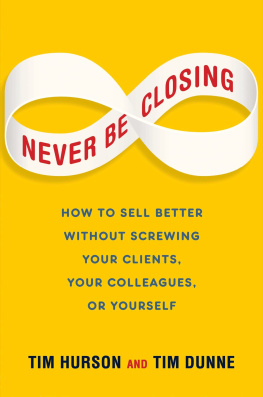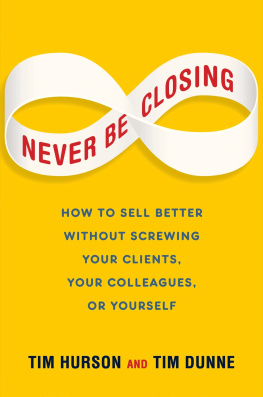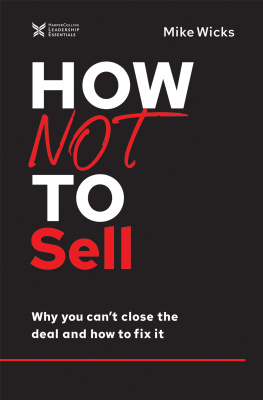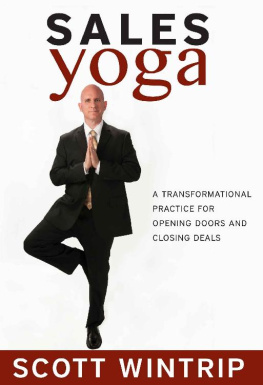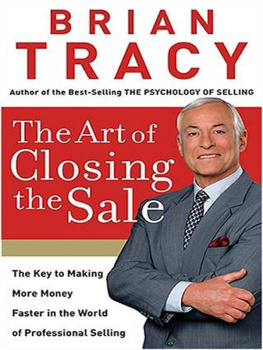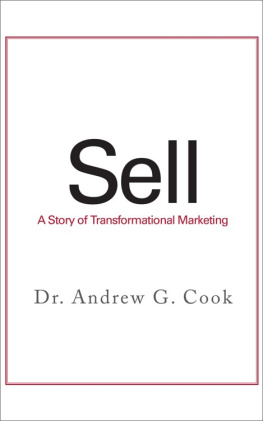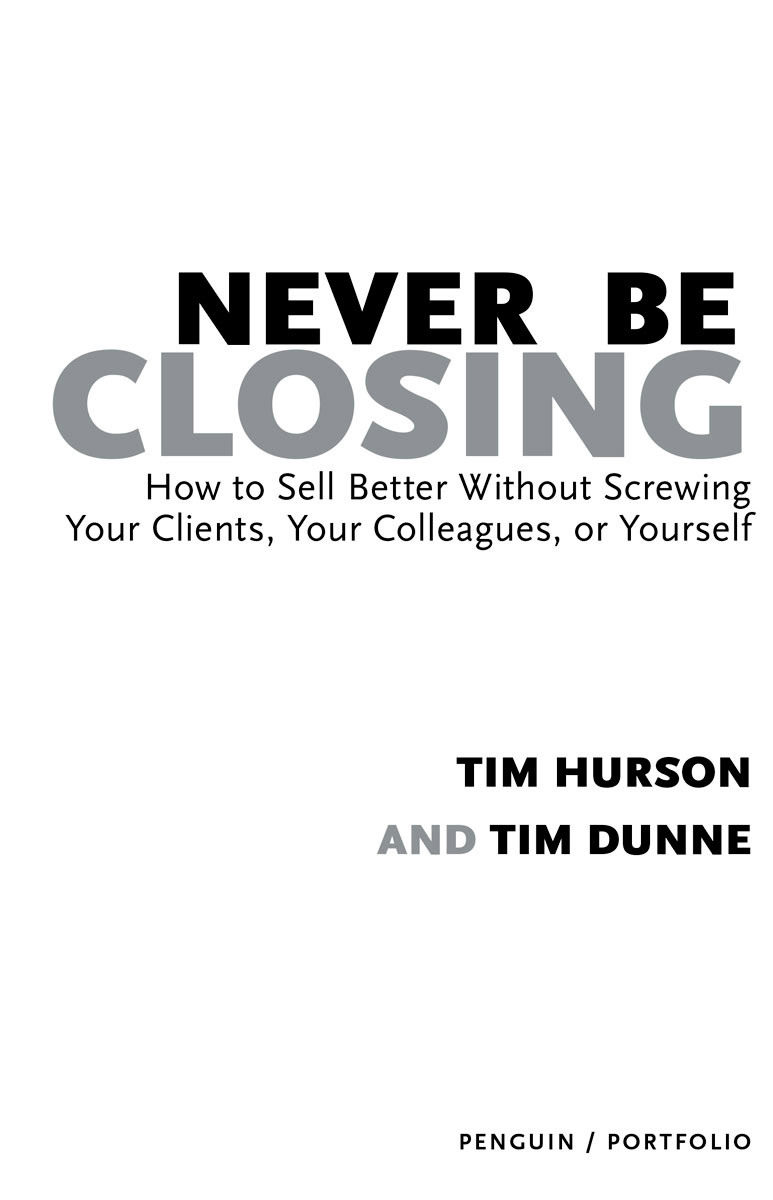Tim Hurson - Never Be Closing: How to Sell Better Without Screwing Your Clients, Your Colleagues, or Yourself
Here you can read online Tim Hurson - Never Be Closing: How to Sell Better Without Screwing Your Clients, Your Colleagues, or Yourself full text of the book (entire story) in english for free. Download pdf and epub, get meaning, cover and reviews about this ebook. year: 2014, publisher: Portfolio, genre: Business. Description of the work, (preface) as well as reviews are available. Best literature library LitArk.com created for fans of good reading and offers a wide selection of genres:
Romance novel
Science fiction
Adventure
Detective
Science
History
Home and family
Prose
Art
Politics
Computer
Non-fiction
Religion
Business
Children
Humor
Choose a favorite category and find really read worthwhile books. Enjoy immersion in the world of imagination, feel the emotions of the characters or learn something new for yourself, make an fascinating discovery.
- Book:Never Be Closing: How to Sell Better Without Screwing Your Clients, Your Colleagues, or Yourself
- Author:
- Publisher:Portfolio
- Genre:
- Year:2014
- Rating:3 / 5
- Favourites:Add to favourites
- Your mark:
Never Be Closing: How to Sell Better Without Screwing Your Clients, Your Colleagues, or Yourself: summary, description and annotation
We offer to read an annotation, description, summary or preface (depends on what the author of the book "Never Be Closing: How to Sell Better Without Screwing Your Clients, Your Colleagues, or Yourself" wrote himself). If you haven't found the necessary information about the book — write in the comments, we will try to find it.
If you sell and if you aim to sell better, you need to know about the strangers dilemma. A stranger doesnt have the leverage of instant credibility. So its not surprising that a wide range of sales tactics, tools, and closing techniques have been developed as a substitute for credibility. Their purpose is often to wrangle a commitment to buy, even when buying may not be in the best interests of the client.
The approach advocated in Never Be Closing is designed to overcome the strangers dilemma, but in a very different way. This book isnt just a catalog of techniques to wrestle money out of a clients pocket. Its a comprehensive strategy that starts with a well-researched process for identifying and solving problems. It shows you how to access your creativity to establish and maintain relationships that will be truly useful for both you and your clients over time. In a very real sense, this book will show you how to become less of a stranger.
Never Be Closing expands on the principles of Tim Hursons first book, Think Better, by offering a simple and repeatable Productive Selling framework to make the most of new opportunities. From getting your foot in the door to delivering the perfect sales pitch to debriefing after a meeting, Hurson and Dunne have an all-encompassing plan to improve your sales results, including:
Eight Paths to Credibility, proven methods that establish your authority to ask key questions that reveal your clients issues, challenges, and goals. Q-Notes, a powerful strategy to make your notes doubly usefulto both record and guide your sales meeting. Three-Act Structure, a creative way to design the sales conversation to explore client needs, offer solutions, and deliver value.
Hurson and Dunne show that outstanding selling isnt just about mastering the art of persuasion. Instead, the most successful selling comes from a sincere interest in your clients and their needs. These methods will enable you to sell more effectively than ever before.
Tim Hurson: author's other books
Who wrote Never Be Closing: How to Sell Better Without Screwing Your Clients, Your Colleagues, or Yourself? Find out the surname, the name of the author of the book and a list of all author's works by series.

